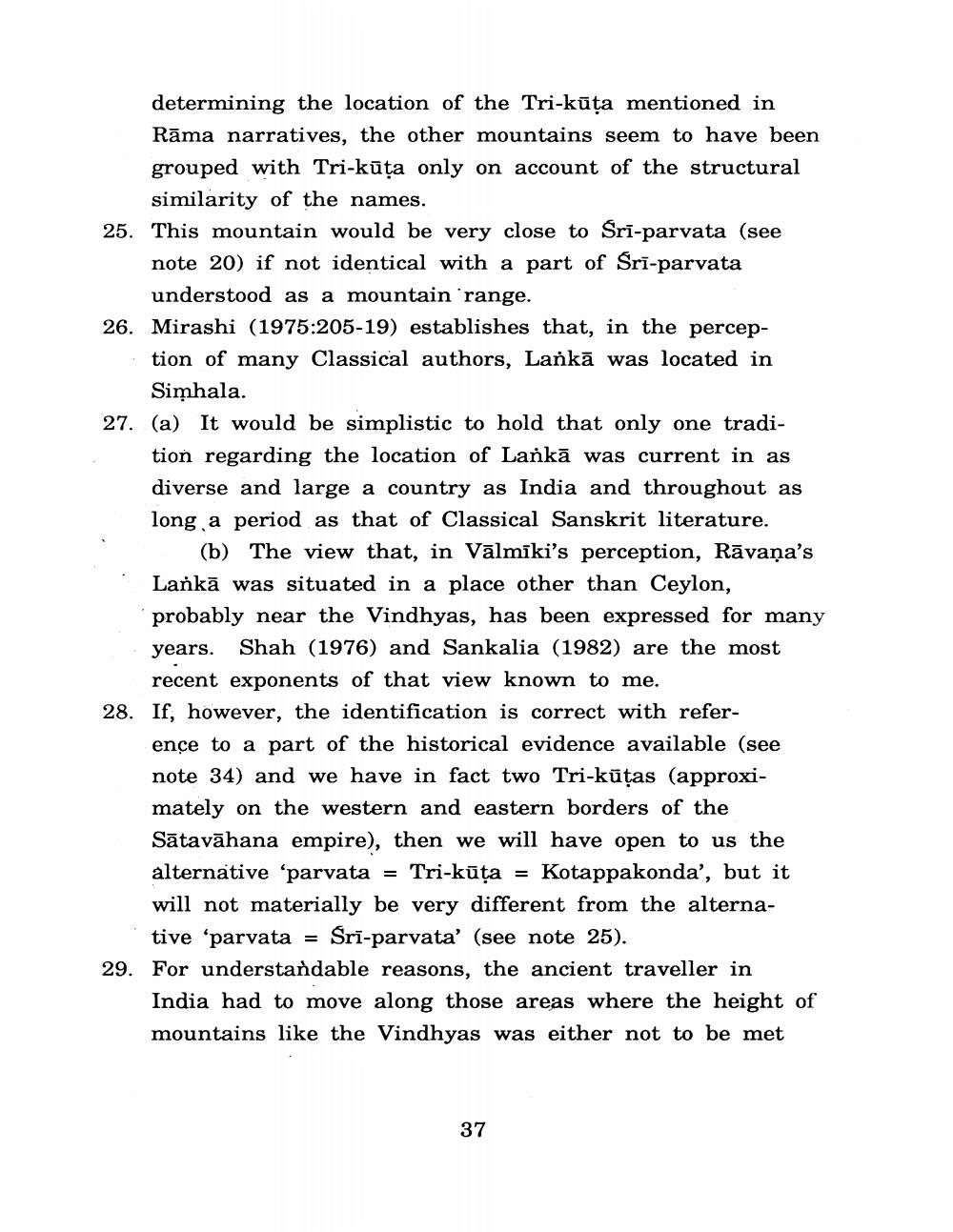________________
determining the location of the Tri-kūta mentioned in Rāma narratives, the other mountains seem to have been grouped with Tri-kūta only on account of the structural
similarity of the names. 25. This mountain would be very close to Sri-parvata (see
note 20) if not identical with a part of Srī-parvata
understood as a mountain range. 26. Mirashi (1975:205-19) establishes that, in the percep
tion of many Classical authors, Lankā was located in
Simhala. 27. (a) It would be simplistic to hold that only one tradi
tion regarding the location of Lankā was current in as diverse and large a country as India and throughout as long a period as that of Classical Sanskrit literature.
(b) The view that, in Vālmīki's perception, Rāvaņa's Lankā was situated in a place other than Ceylon, probably near the Vindhyas, has been expressed for many years. Shah (1976) and Sankalia (1982) are the most
recent exponents of that view known to me. 28. If, however, the identification is correct with refer
ence to a part of the historical evidence available (see note 34) and we have in fact two Tri-kūtas (approximately on the western and eastern borders of the Sātavāhana empire), then we will have open to us the alternative ‘parvata = Tri-kūța = Kotappakonda', but it will not materially be very different from the alterna
tive 'parvata = Sri-parvata' (see note 25). 29. For understandable reasons, the ancient traveller in
India had to move along those areas where the height of mountains like the Vindhyas was either not to be met
.
Wan
37




